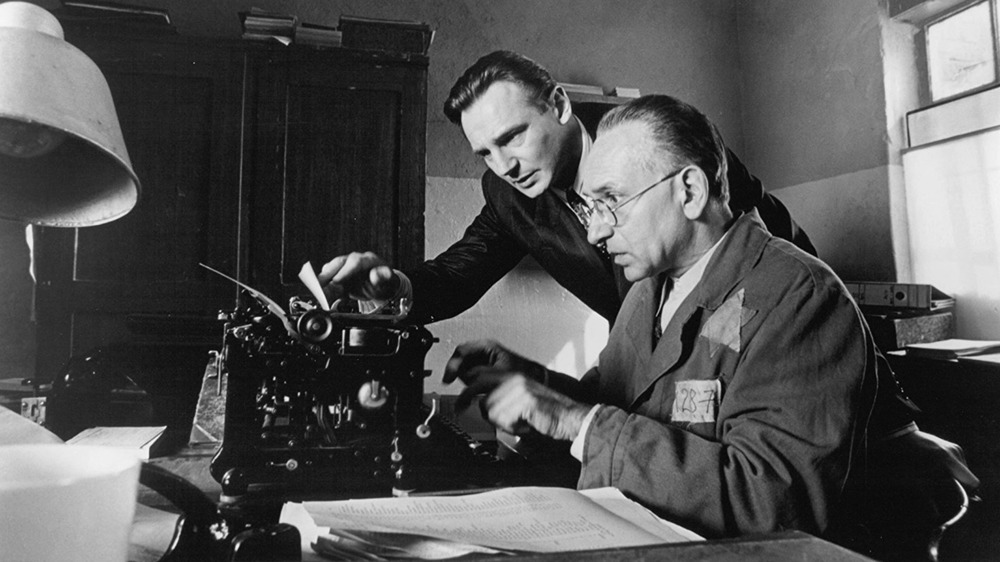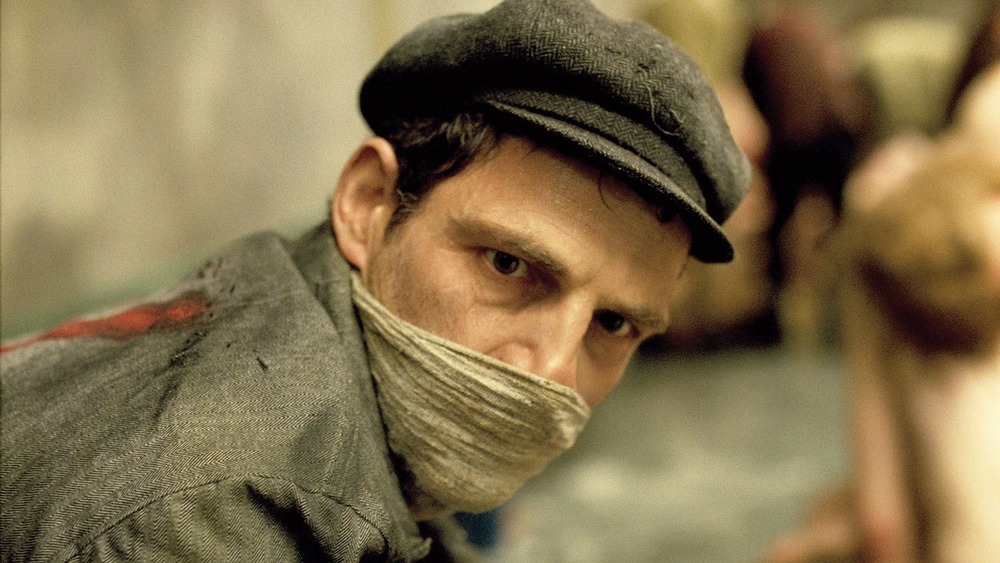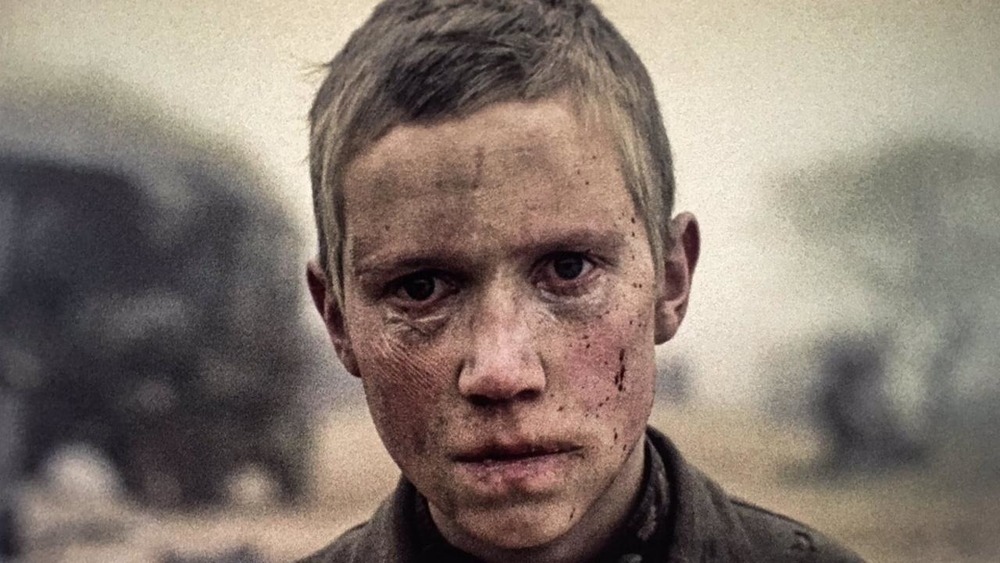The Movies That Are Required Viewing After Schindler's List
For most people, Steven Spielberg's World War II film Schindler's List is a necessary yet haunting watch that portrays the brutal reality of the Holocaust, its victims, and its survivors. The 1993 historical drama is based on the book Schindler's Ark, written by novelist Thomas Keneally, who recounts actual events with added fictional elements.
The book and film cover the story of a real man named Oskar Schindler, played by Liam Neeson, who was an industrialist and member of the Nazi party who used his position of influence, business, and wealth to save the lives of 1,200 Jews during the Holocaust. In the film, Ralph Fiennes plays Amon Goeth, who was the commandant of the Płaszów concentration camp. Ben Kingsley portrays as Itzhak Stern, and Jonathan Sagall appears as Poldek Pfefferberg; these men were two of the Schindlerjuden (translated from German to English as "Schindler Jews"), the group of people Schindler saved. Pfefferberg is actually the person who pushed Keneally and Spielberg to memorialize the man's story, as reported by The New York Times.
While Schindler's List is known for its honest portrayal of the horrors of the Holocaust within this very real story of one man's heroism, there are many other films with similar stories of real-life horrors that are also considered required viewing. In a Reddit thread on the site's Movies subreddit, a user who goes by the handle u/Engineering_123 made an appreciative post about Schindler's List, calling it "one of the most traumatic movies [they've] ever seen" as well as "a masterpiece." Many people commented in agreement, and some went even further, introducing films that they see as just as important to watch.
Son of Saul
For one Reddit user, Son of Saul holds the same level of impact as Schindler's List. But, as they wrote, "whereas Schindler's List is traumatic for what it showed, Son of Saul is equally traumatic for what it leaves to the viewer's imagination." The Hungarian film was released to critical acclaim in 2015, premiering at the Cannes Film Festival and winning the Grand Prix, before going on to win a BAFTA, Golden Globe, and Academy Award.
The film tells the story of a man named Saul Ausländer (Géza Röhrig), a prisoner at a concentration camp who is forced to be a Sonderkommando, or one of the people made to help dispose of the bodies of gas chamber victims — a horrific reality for many people during World War II. Son of Saul takes place over a day and a half after Saul sees a boy survive the gas chambers, only to be suffocated by a Nazi. Claiming the boy is his son, Saul makes it his mission to save the body from cremation and give him a proper Jewish burial. The story covers Saul's search for a Jewish Rabbi to help him bury the boy, as other prisoners plan an uprising to get to the outside world proof of the atrocities being committed there so that they can receive help.
Son of Saul left critics in awe of its harrowing depiction of the Holocaust, with critics like Philip Kemp of Sight & Sound saying that while "it has sometimes been suggested that there's little more to be said, in cinematic terms, about the unspeakable horrors of the Holocaust, [...] the single-minded power and visceral immediacy of [director László] Nemes' achievement, rightly acclaimed and awarded, prove otherwise."
Come and See
The other movie suggested on Reddit as required viewing after Schindler's List is the Soviet anti-war film called Come and See, which was released in 1985. Based on the 1978 book I Am from the Fiery Village, co-written by Ales Adamovich (who worked on the screenplay for the movie), Come and See is a film that took director Elim Klimov eight years of fighting the Soviet authorities' censorship to make (via Vanity Fair). The film focuses on the Nazi occupation of Belarus and a teenager named Flyora (Aleksey Kravchenko) who joins the Belarusian resistance, and depicts the horrific crimes committed by the Nazis on villagers (as experienced by Flyora) in Eastern Europe.
User u/xNinjahz on Reddit called the film "relentless," saying that the horror "just doesn't stop, things get worse and worse and worse." The film mixes hyper-realism and surrealism to portray the crimes committed against so many human beings during World War II, and although it's definitely hard to watch, many believe it's worth it. As described by Walter Goodman of The New York Times, who reviewed the film all the way back in 1987, the film's director "proves a master of a sort of unreal realism that seeks to get at events terrible beyond comprehension."


